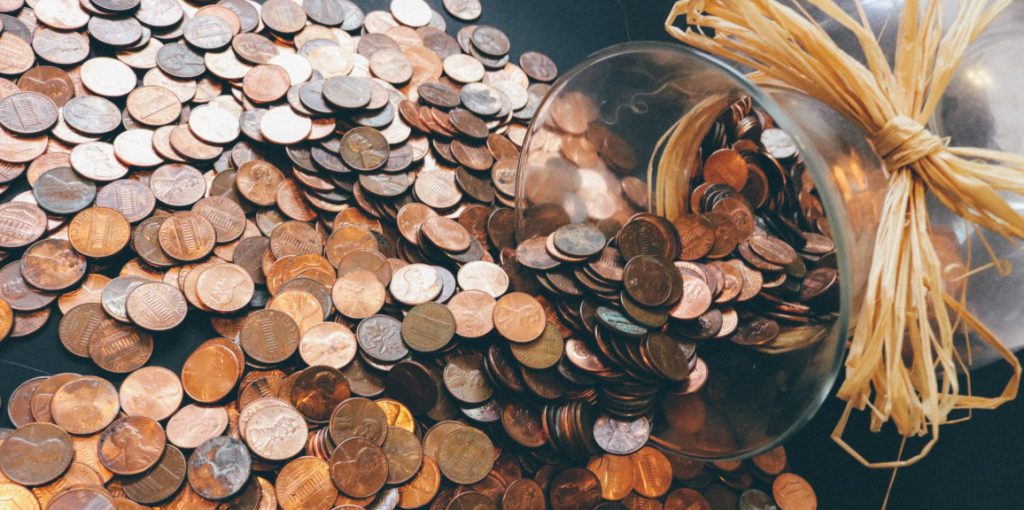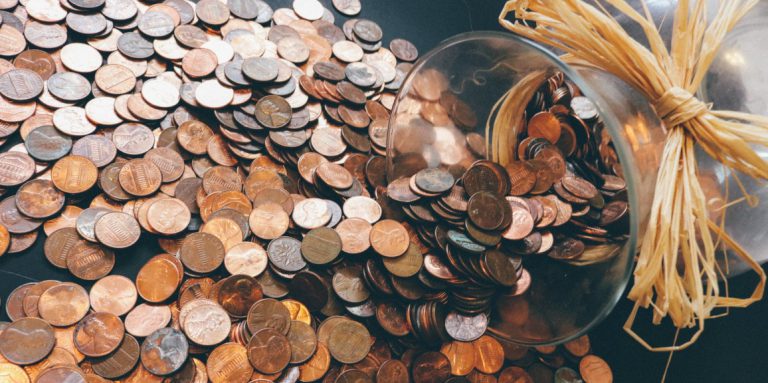It’s true: student loans can be a real pain. The debt can put a huge weight on your shoulders, and keeping up with the monthly payments on top of your other bills can be a real struggle.
Getting rid of your debt is key to achieving financial success. However, when you’re facing a huge student loan balance, making progress can feel impossible.
If you’re wondering how to pay off student loans fast, one strategy to consider is microsaving. With this approach, you don’t need large sums of money; you just need your spare change.
What is microsaving?
To pay off your loans ahead of schedule, you need to make extra payments. But when you’re living paycheck to paycheck, finding an additional $100 or even $50 may be completely unrealistic.
If you’re looking for creative ways to pay off student loans but don’t have a lot of extra money at the end of each month, microsaving may be a smart option for you.
Microsaving is a strategy in which you continually put very small amounts of money — often $1 or less — aside in a separate bank account. Over time, these small amounts add up. Once your account has reached a certain threshold — such as $25 — you can use that money to make an extra payment on your student loans.
How microsaving works
You might not realize it, but microsaving can be a powerful debt repayment strategy. An extra $15 or $25 toward your student loans may not sound like a lot, but it can have a serious impact on your total repayment.
For example, let’s say you have $40,000 in student loans at 7% interest. Under a ten-year repayment plan, you’d have a minimum monthly payment of $465. Over the length of your loan, you’d repay a total of $55,702. Interest charges would cost you over $15,000.
But let’s say you used microsaving and scraped together enough money to put an extra $15 per month toward your loans. With a monthly payment of $480, you’d pay off your loans a full five months ahead of schedule. And, you’d repay just $54,941. Microsaving would help you save over $750.
Boost that extra payment to $25 — for a total payment of $490 — and the savings are even more significant. You’d pay off your loans eight months early, and save over $1,200.
Microsaving in Action
| Payment | Time | Interest | Loan Total | Total Saved |
| $465 | 10 years | $15,702 | $55,702 | $0 |
| $480 |
9 years, 7 months | $14,942 | $54,941 | $761 |
| $490 |
9 years, 4 months | $14,475 | $54,475 | $1,227 |
Microsaving apps
You can do microsaving on your own. Just set up a separate bank account and whenever you save some money — such as when you have a coupon at the grocery store or get a check for your birthday — transfer the extra amount to your new account.
If that sounds like a lot of work, don’t worry; there are several apps that make it easy for you.
Microsaving apps work a bit differently; they sync with your bank accounts and monitor your transactions. Whenever you make a purchase, it rounds up the amount to the nearest full dollar, and deposits the difference into a separate bank account.
For example, if you bought a coffee for $3.75, it would round up the cost to $4.00, and would deposit the extra 25 cents to your account.
Two of the biggest microsaving apps are Chime and Qapital.
1. Chime
Chime is actually a bank that offers low-cost banking accounts. When you open an account, you can automatically save money by using your debit card for purchases or bills. The app will round up the amount to the nearest dollar and deposit the extra money into a separate savings account.
To speed up your savings, you can also set up automatic deposits. You can automatically transfer 10% of your paycheck to your savings account, helping to boost your fund.
Unlike some other microsaving apps, Chime is a fully functional bank account, so your money is available whenever you need it.
Chime charges no fees to sign up, no overdraft fees, no minimum balance fees, and no card replacement fees.
2. Qapital
Qapital is a hybrid microsavings app. You can set up goals and rules to start saving, helping to keep you motivated. Like Chime, Qapital offers a roundup feature on purchases, so you can save your spare change.
However, Qapital does charge some fees. A basic membership costs $3 a month. However, the company says that users save $1,500 a year, on average, using the app, so the fee may be worth it.
How to pay off student loans faster
Microsaving can be a great way to pay off your loans ahead of schedule. However, if you’re wondering how to pay off student loans fast, you may need to use some other strategies, too, to get the results you want. Here’s five tips you can use to supercharge your debt repayment.
- Sell extra stuff: Chances are, you have unused clothes, books, electronics, or old toys in your home. If you sell them on eBay, Poshmark, the Facebook Marketplace, or Craigslist, you could get hundreds of dollars to put toward your loans.
- Get a roommate: Housing is likely one of your biggest expenses. While it may not be ideal, living with a roommate can cut your housing costs in half. If you can tolerate it for just a few years, you can make a huge dent in your debt.
- Launch a side gig: If you have spare time during the evenings or weekends, consider picking up a side gig like delivering groceries or walking dogs. Use that extra income to pay down your debt, and you can cut months off your repayment term.
- Use your windfalls: If you get any money unexpectedly, like a tax refund or a gift, use that cash to pay down your debt. You’ll save more money over time.
- Refinance your student loans: Student loan refinancing can help you score a lower interest rate so more of your payment goes toward the principal rather than interest. Over time, you can save thousands while shortening your repayment term.
If you decide that student loan refinancing is right for you, use Purefy’s Find My Rate tool to compare offers from multiple lenders and get the lowest rates.















